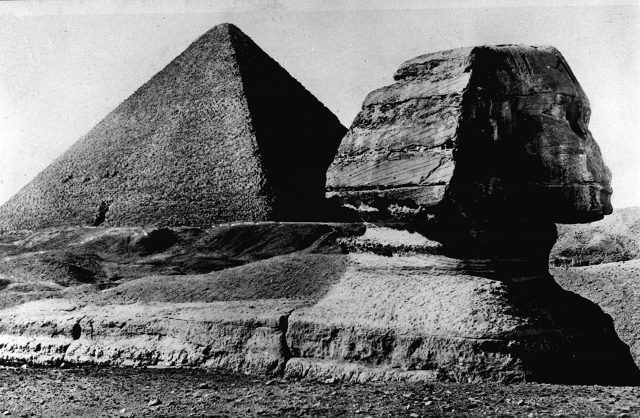
The Great Pyramid has been shrouded in mystery for millennia, but now a long-held secret of its structure might be known thanks to particle physics.An apparent void lying undiscovered deep within the ancient Wonder of the World was found by scientists who had been mapping it using cosmic-ray based imaging.
The internal structure is located above the Grand Gallery – that links two of the Pyramid’s chambers – and traces a similar route for at least 30 metres, according to a study published in the journal Nature.
While the precise design and purpose of the space is unknown, it was hailed by the team of academics as the biggest discovery inside the Giza landmark since the 19th century.
 An international team said the 30-yard void deep within the pyramid is situated above the Grand Gallery (Nariman El-Mofty/AP)
An international team said the 30-yard void deep within the pyramid is situated above the Grand Gallery (Nariman El-Mofty/AP)
Made under the watch of the Pharaoh Khufu and completed in around 2550 BC, the Great Pyramid, also known as Khufu’s Pyramid, served as the world’s tallest man-made construction for thousands of years.
It is the sole survivor of the ancient Seven Wonders of the World. How it was built has long been a bone of academic contention and there is no universal agreement about its creation.
To find out more about the Pyramid, researchers from countries including France and Japan began a project to scan the structure in October 2015.They employed by-products of the cosmic ray known as muons that are only partially absorbed by stone and take noticeably different trajectories through air.
 The void is at the centre of the Great Pyramid (PA)
The void is at the centre of the Great Pyramid (PA)
Detectors were set up inside the Pyramid, including in the so-called Queen’s Chamber.
This allowed the Pyramid’s insides to be visualised without physically disturbing it, as the results showed empty space differently from rock.
The presence of the void, dubbed the ScanPyramids Big Void, was confirmed using three different muon detection technologies over several months after first being spotted, the paper said. The results were then analysed three times.
Despite the breakthrough, the newly discovered structure has yet to be reached in person by any researcher.
Experts, led by Mehdi Tayoubi, said they were “very confident” the results were correct.


Comments & Moderation
Readers’ comments: You are personally liable for the content of any comments you upload to this website, so please act responsibly. We do not pre-moderate or monitor readers’ comments appearing on our websites, but we do post-moderate in response to complaints we receive or otherwise when a potential problem comes to our attention. You can make a complaint by using the ‘report this post’ link . We may then apply our discretion under the user terms to amend or delete comments.
Post moderation is undertaken full-time 9am-6pm on weekdays, and on a part-time basis outwith those hours.
Read the rules here